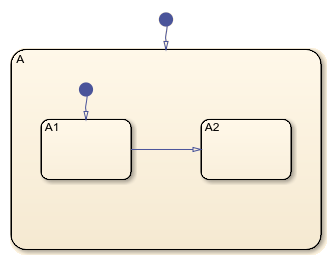commentedBy
Description
objArray = commentedBy(graphicalObject)graphicalObject to be commented out. The graphical object
is commented out when:
The
IsExplicitlyCommentedproperty has a value oftrue. In this case,objArrayincludes the graphical object.The
IsImplicitlyCommentedproperty has a value oftrue. In this case,objArrayincludes the explicitly commented states, boxes, or functions that contain the object. Additionally,If
graphicalObjectis a transition,objArrayincludes the explicitly commented objects that cause the source or destination to be commented out.If
graphicalObjectis an entry or exit port,objArrayincludes the explicitly commented objects that cause the matching entry or exit junction to be commented out.
Examples
Input Arguments
Limitations
When a graphical object is contained in an atomic subchart or an atomic box, the
commentedByfunction returns only explicitly commented objects that are also contained in the subchart or box.
Version History
Introduced in R2023a
